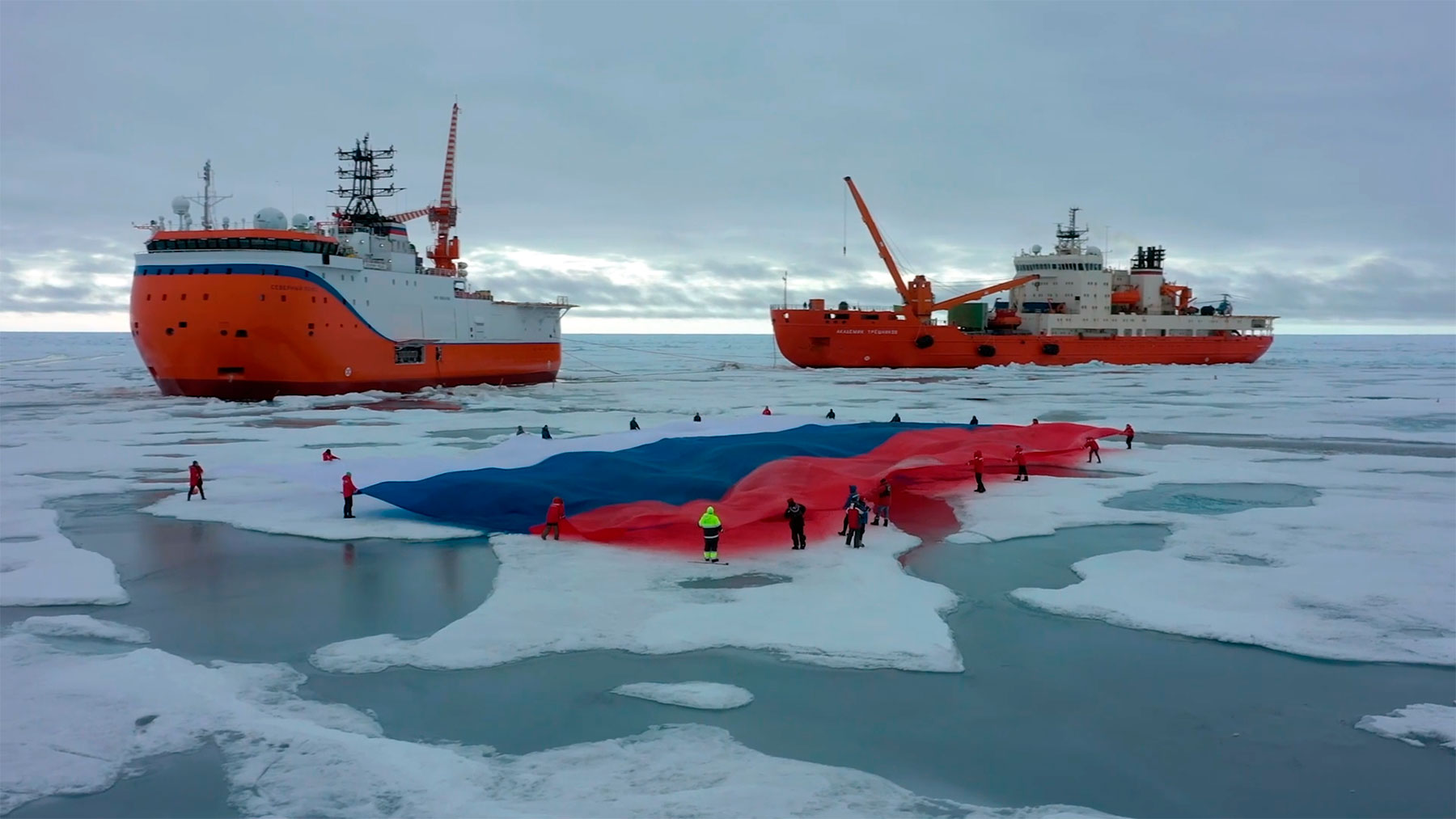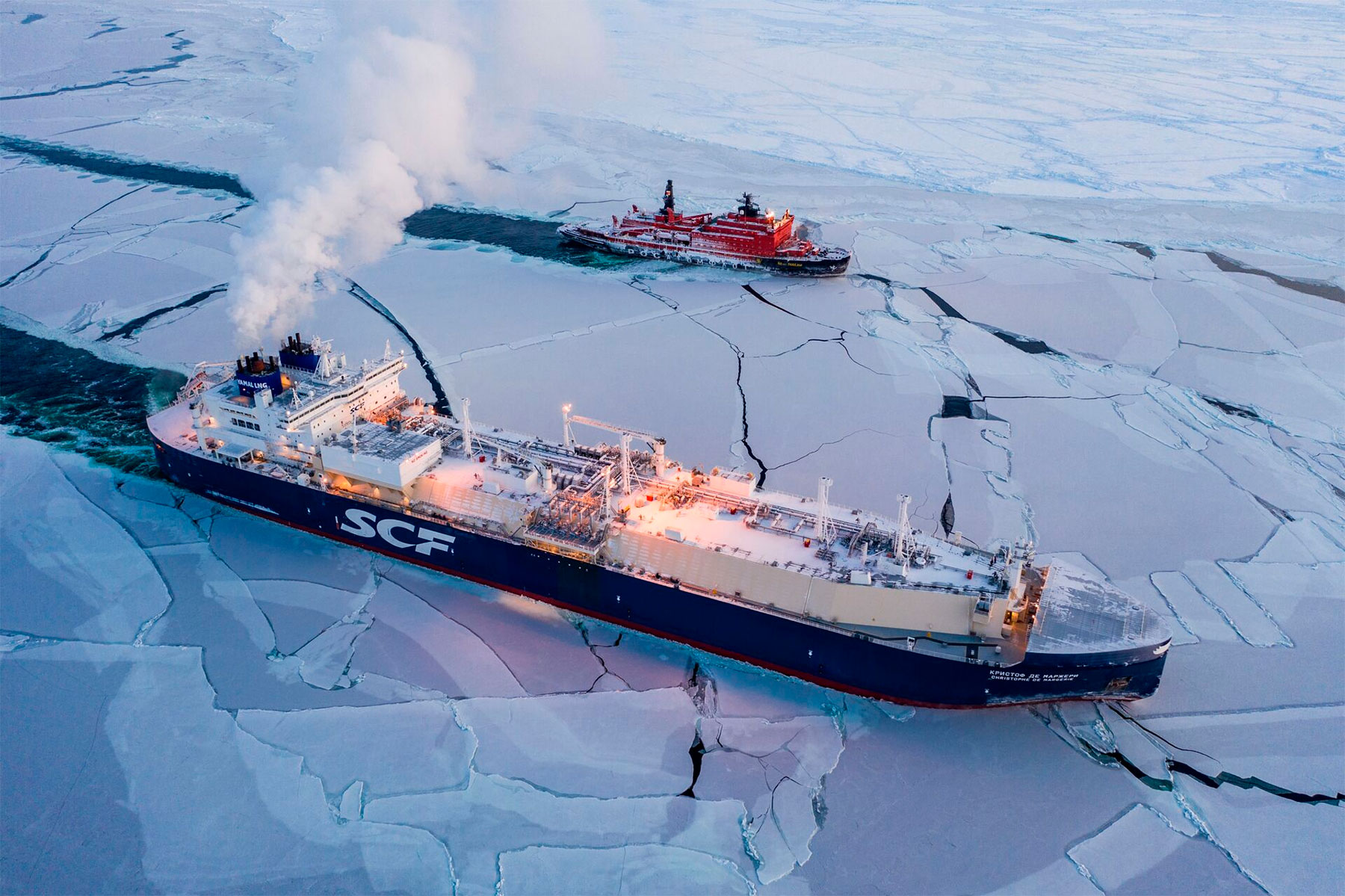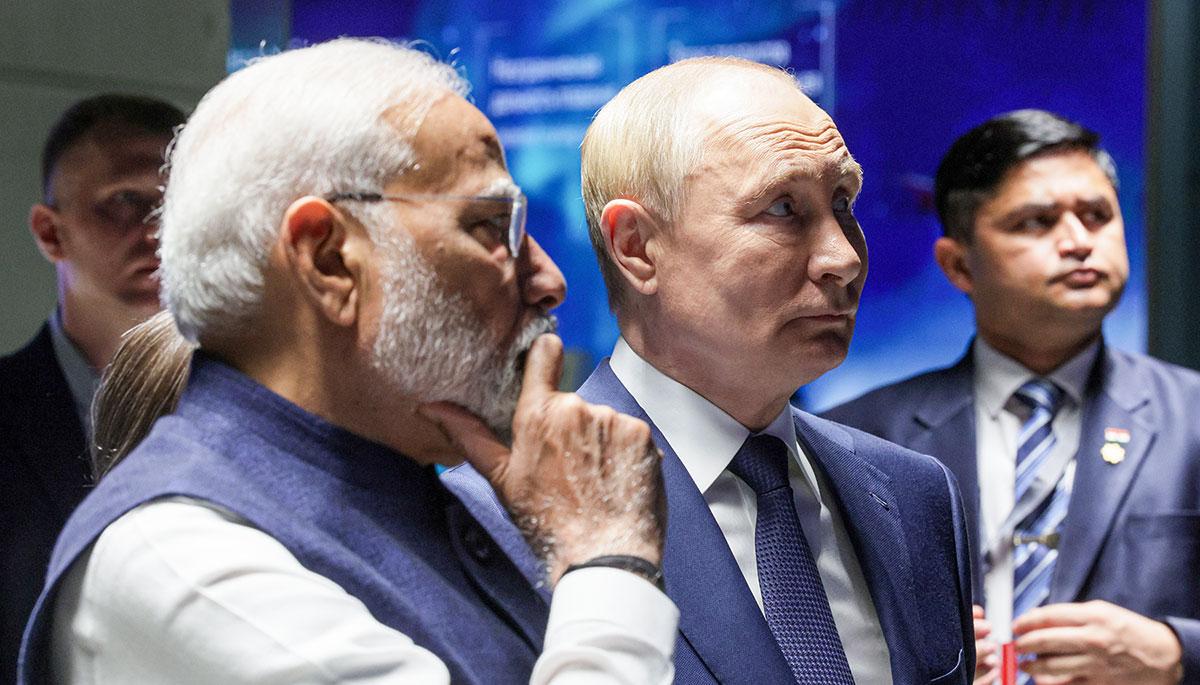The development of the Northern Sea Route (NSR) is currently one of Russia’s key strategic projects for the Arctic region. Given its scale and significance, developing the NSR also requires expanding international cooperation and participation in the project. Russia has been actively attracting Indian partners to find areas where the two can work together to expand the project. On July 8, Indian Prime Minister Narendra Modi visited Moscow, resulting in a joint statement that encouraged cooperation in the development of maritime transportation between Russia and India along the NSR. To this end, both parties expressed their readiness to establish a joint working body within the framework of an intergovernmental commission for cooperation on the Northern Sea Route.
Why is the Northern Sea Route so important in today’s day and age? How has international cooperation on the NSR developed after 2022? Why is India interested in the NSR? What are some of the results of Modi's visit to Russia and what priorities do Russia and India share in the Arctic? Jawahar Vishnu Bhagwat, PhD in Political Science, commented on these and other questions.
The development of the Northern Sea Route (NSR) is currently one of Russia’s key strategic projects for the Arctic region. Given its scale and significance, developing the NSR also requires expanding international cooperation and participation in the project. Russia has been actively attracting Indian partners to find areas where the two can work together to expand the project. On July 8, Indian Prime Minister Narendra Modi visited Moscow, resulting in a joint statement that encouraged cooperation in the development of maritime transportation between Russia and India along the NSR. To this end, both parties expressed their readiness to establish a joint working body within the framework of an intergovernmental commission for cooperation on the Northern Sea Route.
Why is the Northern Sea Route so important in today’s day and age? How has international cooperation on the NSR developed after 2022? Why is India interested in the NSR? What are some of the results of Modi's visit to Russia and what priorities do Russia and India share in the Arctic? Jawahar Bhagwat Vishnu, PhD in Political Science, commented on these and other questions.
What factors define the importance of the Northern Sea Route today? Which states are most interested is its development?
The ongoing Red Sea crisis, conflict in the Black Sea, issues with the Panama Canal, and the March 2021 Suez Canal blockage have highlighted the vulnerability of existing shipping routes. The United Nations Conference on Trade and Development issued an important report in this respect in February 2024. For example, after the closure of the Suez Canal because of a stuck container vessel—the Ever Green—world trade was severely hit; approximately USD 10 billion was lost per day for those using this route. The Northern Sea is a potential alternative shipping route, especially during the summer navigation season. The Russian Federation aims to achieve year-round navigation by 2025, and this will be an important step forward in fulfilling its potential.
How has international cooperation on the Northern Sea Route developed after 2022? Which countries are cooperating with Russia and what are their interests in the NSR?
Obviously, the NSR is critical for Russia as it considers it a historical national transport route, like how Canada perceives the Northwest Passage. Geopolitical developments in the past two years have accentuated its importance for Russia due to sanctions. It serves as a major transport route in developing trade with East Asia, especially China. China-Russia trade turnover has reached USD 240 billion—poised to only grow higher—and the NSR is one of the routes that facilitates this trade. For instance, in 2023, 1.5 million tons of petroleum products were exported from Russia to China using this route. During the Saint Petersburg International Economic Forum (SPIEF), an agreement was signed with Chinese shipping company Hainan Yangpu New Shipping to increase container shipping and build ice class container vessels. During the SPIEF, Rosatom also indicated that the joint commission for the development of the NSR with China is expected to be in place by October 2024. Looking back, President Putin had proposed this in March 2023, during President Xi's visit to Russia. After Chinese shipping companies kept distance from the project in 2022, this clearly indicates China's revived interest in the NSR. In November 2023, a Rosatom subsidiary company signed an agreement with UAE-based DP World for logistical development along the NSR. Therefore, it can be unequivocally stated that due to concerted efforts of the Russian government, specifically Rosatom, international interest in the NSR from Asian countries friendly to Russia has revived after 2022. Cargo turnover increased to 36.25 million and international cargo transported reached 2.1 million tons, a significant revival from the almost negligible levels in 2022.
Due to the NSR’s advantage in covering a vast distance, other countries could also potentially benefit from the route, including the Nordic countries, Germany, the Netherlands, Japan, and the Republic of Korea. However, they are unlikely to use the NSR in the near to medium term given the current geopolitical climate.
Why is India interested in the Northern Sea Route?
It is important to note that the advantage for NSR related to distance in Asia is restricted to North East Asia and ends at Vietnam. Therefore, for other countries such as India, shorter distance is not an advantage for using the NSR. However, what matters for India is the study of climate change and the potential disastrous effects it may have on its population that lives within 50 kilometers of an over 5700 km coastline. The other factor contributing to India’s interest in the NSR is energy security. India imports 87% of its oil and over 45% of its gas. India not only seeks stable and economical energy supplies but also strives to diversify them. This is also important to avoid undue dependence on one country and one shipping route. Indian petroleum companies have significant investments in Siberia and Sakhalin, so the Arctic is also a promising option. However, India is weighing all its options carefully. India has also realized the criticality of long-term contracts and the need to negotiate to achieve India's energy security needs.
How is Russia-India cooperation on the NSR project progressing? What exactly are the most promising areas for bilateral cooperation?
India and Russia's trade significantly expanded in 2023, hitting a new record of approximately USD 65 billion. The Arctic region and the NSR are definitely areas where the two can expand their cooperation. For example, an agreement was signed in September 2023, to train Indian seafarers in Arctic sailing. India also evinced interest in jointly building diesel icebreakers. There was also a report of an Indian pharmaceutical company investing in Murmansk. Here, I would like to highlight that unlike the US and Europe, Russia is an unfamiliar market for Indian companies. It is like a black box. There are many unresolved issues, like having a stable payment mechanism. More interaction would definitely help overcome this challenge. I think there is a great range of traditional Indian goods that can be directly exported to the Arctic Zone of the Russian Federation (AZRF). There is also a possibility for Russia to attract Indian manpower in spheres like shipbuilding, hydrography, computer programming and medicine, areas where the Russian Federation faces an acute shortage of qualified specialists. Overall, in my opinion, Indian-Russia cooperation in the Arctic and the NSR is slowly progressing. This could additionally be attributed due to certain geopolitical compulsions.
Recently on July 8, Narendra Modi, the now re-elected Prime Minister of India, visited Russia and held a meeting with Russian President Vladimir Putin. Could you please comment on this visit and on the overall vision Modi’s government has for the Arctic and Russia-India relations in the Arctic?
India's current government took an important step by releasing India's Arctic Policy in March 2022. However, it is only a nascent step forward as there is no publicly released plan. There is supposed to be an inter-ministerial working group to monitor the plan, however there is no media coverage of its meetings or initiatives. In addition, India's Arctic program receives less funding than its Antarctic research program. The policy will only be effective if there is some concrete publicly released plan, the implementation of wich could be monitored by experts and media. For instance, India's Cabinet Committee on Security approved a polar research vessel in 2014, but ten years later, it has not yet been ordered. Thus, funding is a major challenge. Overall, money allocated for research and development by India is much lower compared to China, Japan, and the Republic of Korea. This will need to change if India is to fulfill its true potential.
The joint statement signed at the end of Prime Minister Modi's visit includes a reference to the potential of the NSR and the formation of a working group. However, the development of the N-S transport corridor (The International North–South Transport Corridor) was given more attention, judging by the text allocated to the latter topic. This is obvious because as a trade route between the two countries, the N-S transport corridor is potentially shorter. It is also not restricted by the summer season and other infrastructure challenges that the NSR currently faces. Notwithstanding, the text is more specific if it is compared with previous joint statements. I cite the relevant text: "In this context (the Greater Eurasian space), the Sides expressed readiness to actively work to expand logistics links with an emphasis on increasing the capacity of infrastructure, including for implementation of the Chennai-Vladivostok (Eastern Maritime) Corridor and the International North-South Transport Corridor, as well as using the potential of the Northern Sea Route. Both Sides will continue joint efforts to intensify the use of INSTC route to reduce the time and cost of cargo transportation and to promote connectivity in the Eurasian space. Cooperation in the field of transport and logistics will be based on the principles of transparency, broad participation, local priorities, financial sustainability and respect for sovereignty and territorial integrity of all nations. The Sides support cooperation in developing shipping between Russia and India via the Northern Sea Route. For this purpose, they expressed readiness to establish a joint working body within the IRIGC-TEC for cooperation on the Northern Sea Route".
Do you see any opportunities for cooperation within BRICS or between BRICS countries on developing the NSR? Do the positions and interests of BRICS countries on the need to develop this transportation route match?
BRICS has officially expanded in 2024. Most countries, including India, are located far away from the Arctic. Only China and India are observer countries in the Arctic Council. Therefore, I do not see any consolidated joint interest from BRICS in the Arctic or the NSR. On the other hand, as observed earlier, a UAE company has indicated commercial interest in the NSR. However, they may be interested in specific scientific research activities proposed by Russia to develop expertise. Regardless, I do not rule out investment by the New Development Bank in Arctic projects of the AZRF in the future. In my opinion, the most promising project for investment by BRICS countries, including India, is the Eastern Transport and Logistics hub in Vladivostok, which is now scheduled to be completed by 2027-2028. This will include a transshipment terminal for cargo, from ice class to non-ice class vessels. Already, the UAE’s DP World has signed up for the project with FESCO and Atomenergoprom (a Rosatom subsidiary company). The increase in capacity of Vladivostok’s port to 1.2 million TEU, and its designation as a starting point of the "Greater Northern Sea Route" would definitely act as a driver for the development of the region and trade with BRICS countries. Specifically, for India, this would give impetus to the proposed Visakhapatnam-Chennai shipping route. Increased interaction with Indian shipping companies, such as the Shipping Corporation of India, is likely to facilitate this. Russia may also consider forming an international team of experts to monitor and advise on international aspects of further developing the NSR. Here, I would like to mention that China has created a similar organization, following feedback received from countries participating in the Belt and Road Initiative. This group could also interact with the BRICS transport commission proposed by Russia. Another important area is in professional training, particularly in in transport policy and various aspects of transportation and logistics. BRICS University needs to formulate special programs for bachelor’s, master’s and PhD candidates. Additionally, short courses must be created for policy makers and government officials to keep them informed about current trends in these spheres.
How does engagement with Russia on NSR and Arctic issues affect India's relations with the United States? Could the US position of seeing Russia as a rival, including in the Arctic, block the development of Arctic cooperation between Russia and India, given the importance for India of maintaining balanced relations with the United States?
The US factor in India's Arctic and NSR interests cannot be dismissed. India tries to balance relations with its most important trading partners such as the US, the EU, and Russia. The US is the only developed country with which India has a positive trade balance. It has also become a major arms exporter to India because of Russian limitations in meeting India's imports, leading it to prioritize domestic requirements connected with its own national security. In contrast, India's trade with Russia is unbalanced in favor of Russia and concerted efforts need to be made to correct this imbalance. For example, when the US tightened sanctions against Russia in November 2023, this had an immediate impact on Sovcomflot tankers. Some of these tankers spent several days outside Indian ports before they were redirected to China. India's imports, especially of Ural crude oil, decreased. India is an exporter of refined petroleum products, especially to the EU. By April, the US realized that India’s impact on the price stability of these products could not be ignored. Therefore, during a visit to India, US trade officials assuaged Indian concerns regarding Russian oil imports. Soon, imports of Russian crude reached pre-November 2023 levels. It is important to mention here that Russia's share of India's oil imports was 35% in 2023. Moreover, Indian state oil firms have invested $5.46 billion in buying stakes in four different assets in Russia. These include a 49.9% stake in the Vankorneft oil and gas field and another 29.9% in the TAAS-Yuryakh Neftegazodobycha fields. They receive dividends on profits made by the operating consortium from selling oil and gas produced from the fields. The second example is the lack of investment by Indian petroleum companies in Arctic projects such as Arctic LNG 2 and Rosneft. From a long-term energy security perspective, investment appears to be logical and rational. However, this also creates a geopolitical risk due to US sanctions on the Arctic LNG 2 project and other mining related sanctions. Furthermore, there may also be other legitimate unresolved Indian concerns. For instance, due to problems with the German subsidiary of Gazprom, which refused to honor its contract, they were unable to repatriate dividend income from investments in Russia. Media reports indicate that this was about USD 600 million. The latter issue is important as oil could have been expeditiously exported to resolve the issue. In my opinion, a separate energy sub-working group under the IRIGC is necessary to resolve such issues in a timely manner. To support my analysis, I would like to quote the State Department spokesman Matthew Miller, who told reporters, "We have made quite clear directly with India our concerns about their relationship with Russia". In addition, the US ambassador, Eric Garcetti stated: "I know that India likes its strategic autonomy, but in times of conflict there is no such thing as strategic autonomy". Thus, it is in the interest of the US to undermine India's special strategic relationship with Russia and also use it as a catspaw against China. Cooperation in the Arctic and the NSR reflect this overall trend in US foreign policy towards India. Overall, while India certainly values its time-tested strategic partnership with Russia, it will continue to practice multi-vector diplomacy to protect its national interests.









